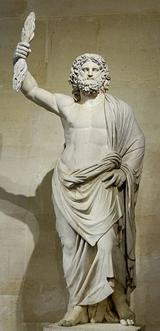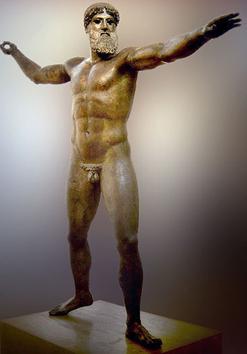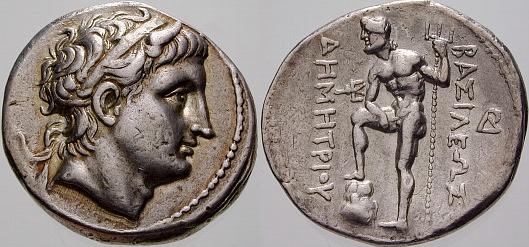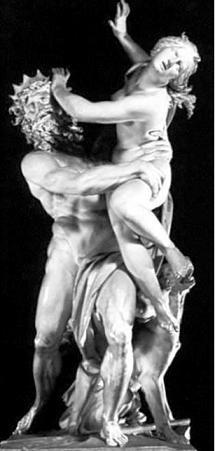















[1] Mylonas, George. E. "The Bronze Statue from Artemision (1944),
http://www.jstor.org.proxy.library.carleton.ca/stable/pdfplus/499921.pdf.
[2] Mylonas, George. E. "The Bronze Statue from Artemision (1944),
http://www.jstor.org.proxy.library.carleton.ca/stable/pdfplus/499921.pdf.
[3] Mylonas, George. E. "The Bronze Statue from Artemision (1944),
http://www.jstor.org.proxy.library.carleton.ca/stable/pdfplus/499921.pdf.
[4] Mylonas, George. E. "The Bronze Statue from Artemision (1944),
http://www.jstor.org.proxy.library.carleton.ca/stable/pdfplus/499921.pdf.
[5] Mylonas, George. E. "The Bronze Statue from Artemision (1944),
http://www.jstor.org.proxy.library.carleton.ca/stable/pdfplus/499921.pdf.
[6] Mylonas, George. E. "The Bronze Statue from Artemision (1944),
http://www.jstor.org.proxy.library.carleton.ca/stable/pdfplus/499921.pdf
[7] "Silver tetradrachm of Demetrius Poliocetes(1999), http://www.britishmuseum.org/explore/highlights/highlight_objects/cm/s/silver_tetradrachm_of_demetriu.aspx.
[8] "Silver tetradrachm of Demetrius Poliocetes(1999), http://www.britishmuseum.org/explore/highlights/highlight_objects/cm/s/silver_tetradrachm_of_demetriu.aspx.
[9] "Silver tetradrachm of Demetrius Poliocetes(1999), http://www.britishmuseum.org/explore/highlights/highlight_objects/cm/s/silver_tetradrachm_of_demetriu.aspx.

Artefact #5: “The Bronze statue from Artemision”
 This artifact is known as “The Bronze statue from Artemision”. This bronze sculpture is also recognized as the god recovered from the seabed of the Cape of Artemision in Northern Ionic Euboea. The sculptor of the statue has been yet to be identified, but Kalamis, Hageladas, an unknown Boeotian-Argive sculptor, and Myron have been suggested as possible sculptors[1]. The statue was discovered in 1926 and excavated in 1928; it was found in a shipwreck, this ship is believed to have sunk in the middle of the second century BCE. The bronze statue has a right hand that is raised above the extended left hand, as if it is ready to hurl something, the object about to be hurled is missing. There has been much debate as to who this god is, whether it is Zeus, the god of the sky or Poseidon the earth shaker and god of the ocean, because both gods strike the same pose when brandishing their iconic weapons. Zeus’s trademark weapon is his thunderbolt and Poseidon is represented holding a trident, which Homer in the Iliad says is used to stir up tides in the ocean. Poseidon exhibits an athletic stance of throwing a missing object in this bronze statue. Chris Karazous in his final publication of the statue recognized it unfailingly as a figure of Poseidon[2]. H.G Beyen also claimed that the statue is undeniably Poseidon, because by closely observing the statue it is evident that the whole in between the right hand only allows a narrow object to pass through[3]. The position and the distance of the right hand from the face justifies that the object being held by the statue was long in length and the position of the head shows that the god is trying to get a clear view and is measuring his target. Julius Juthner has claimed that the statue is indeed not a god, but an athlete who was successful in the pentathlon (A contest of the Greek people that featured five events)[4]. This statue is the source of various debates, which can all be answered by the recovery of the missing item, but seeking the missing item was abandoned, because of the dangers of the searching the shipwreck which led to a death of one of the divers. One of the arguments used to prove that the statue is a god, is the size of the statue, it is 208 centimeters, equivalent to 6 feet and 8 inches. The size of the object allows us to understand the way the early Greeks reflected the greatness of their gods, by illustrating their magnificence in sculptures[5]. Juthner argues that also athletes in the early Greece were anointed divine status and the statue could represent an athlete in his prime, but the beard disagrees with his ideology, because most athletes in their prime were young and beardless and the Greeks were not naturalistic to capture beards in the statues of a man[6]. The statue of the god Poseidon exemplifies the Greek notion of arête meaning goodness; success; knowledge and virtue in all that individuals do to achieve full potential. So from the statue we understand that the Greeks acknowledged athletes and represented them in god like image. The stance of the god depicted above is still used in athletics, especially the tossing of a javelin. As the sculpture is represented we can relate the beard as a source of wisdom and knowledge and the body as athletic perfection.
This artifact is known as “The Bronze statue from Artemision”. This bronze sculpture is also recognized as the god recovered from the seabed of the Cape of Artemision in Northern Ionic Euboea. The sculptor of the statue has been yet to be identified, but Kalamis, Hageladas, an unknown Boeotian-Argive sculptor, and Myron have been suggested as possible sculptors[1]. The statue was discovered in 1926 and excavated in 1928; it was found in a shipwreck, this ship is believed to have sunk in the middle of the second century BCE. The bronze statue has a right hand that is raised above the extended left hand, as if it is ready to hurl something, the object about to be hurled is missing. There has been much debate as to who this god is, whether it is Zeus, the god of the sky or Poseidon the earth shaker and god of the ocean, because both gods strike the same pose when brandishing their iconic weapons. Zeus’s trademark weapon is his thunderbolt and Poseidon is represented holding a trident, which Homer in the Iliad says is used to stir up tides in the ocean. Poseidon exhibits an athletic stance of throwing a missing object in this bronze statue. Chris Karazous in his final publication of the statue recognized it unfailingly as a figure of Poseidon[2]. H.G Beyen also claimed that the statue is undeniably Poseidon, because by closely observing the statue it is evident that the whole in between the right hand only allows a narrow object to pass through[3]. The position and the distance of the right hand from the face justifies that the object being held by the statue was long in length and the position of the head shows that the god is trying to get a clear view and is measuring his target. Julius Juthner has claimed that the statue is indeed not a god, but an athlete who was successful in the pentathlon (A contest of the Greek people that featured five events)[4]. This statue is the source of various debates, which can all be answered by the recovery of the missing item, but seeking the missing item was abandoned, because of the dangers of the searching the shipwreck which led to a death of one of the divers. One of the arguments used to prove that the statue is a god, is the size of the statue, it is 208 centimeters, equivalent to 6 feet and 8 inches. The size of the object allows us to understand the way the early Greeks reflected the greatness of their gods, by illustrating their magnificence in sculptures[5]. Juthner argues that also athletes in the early Greece were anointed divine status and the statue could represent an athlete in his prime, but the beard disagrees with his ideology, because most athletes in their prime were young and beardless and the Greeks were not naturalistic to capture beards in the statues of a man[6]. The statue of the god Poseidon exemplifies the Greek notion of arête meaning goodness; success; knowledge and virtue in all that individuals do to achieve full potential. So from the statue we understand that the Greeks acknowledged athletes and represented them in god like image. The stance of the god depicted above is still used in athletics, especially the tossing of a javelin. As the sculpture is represented we can relate the beard as a source of wisdom and knowledge and the body as athletic perfection.
Artefact #6: Ancient Macedonian coin
 This Artifact is of significant value to the historical representation of Greek culture. This Artifact is an ancient Macedonian coin depicting the face of Demetrius Poliorcetes and the image of Poseidon the god of the sea[7]. The image shows Poseidon holding a trident with his left hand and his right foot planted on a rock. Poseidon image is used to show superiority as he wields his trident as a method of stamping his authority as lord of the seas. This silver coin was developed around 301-283BC, and was one of Demetrius Poliorcretes exhibition of power. He assumed naval supremacy from the Egyptian kings of the southern Mediterranean. The image on the coin is constructed in relief form, one of the major methods of art to the early Egyptians, so the image on the coin tells us that the Greeks adopted drawing and sculpting techniques from the Egyptians. Following the death of his father, Demetrius became sole ruler and begun to issue out coins in his own name as a representation of his dominance of power. The writing on the coin ΒΑΣΙΛΕΩΣ ΔΗΜΗΤΡΙΟΥ represents the coin of King Demetrius[8]. Obtaining control of the Mediterranean was important in Early Greek times, because it was the major source of transportation and trades to other polis. The image of Poseidon at the back of the coin show the Macedonian kings boast of naval supremacy in the Mediterranean. His kingdom stretched from Greece to Macedonia to Cyprus by the way of the Asia Minor[9]. The sea was the ruling domain of the king and he used the image of Poseidon to demonstrate his power and acknowledge himself as the king of the ocean, the image can be analyzed as him being ordained by Poseidon to be the emperor of the seas, so from this coin it should be recognized that the image of the gods are used as a method of propaganda. The Macedonian king used the coin as the image of Poseidon as a representation and constant reminder of his superiority. The king uses the coin to constantly show that his power is equivalent to that of a god and therefore he should be treated, feared and respected like one.
This Artifact is of significant value to the historical representation of Greek culture. This Artifact is an ancient Macedonian coin depicting the face of Demetrius Poliorcetes and the image of Poseidon the god of the sea[7]. The image shows Poseidon holding a trident with his left hand and his right foot planted on a rock. Poseidon image is used to show superiority as he wields his trident as a method of stamping his authority as lord of the seas. This silver coin was developed around 301-283BC, and was one of Demetrius Poliorcretes exhibition of power. He assumed naval supremacy from the Egyptian kings of the southern Mediterranean. The image on the coin is constructed in relief form, one of the major methods of art to the early Egyptians, so the image on the coin tells us that the Greeks adopted drawing and sculpting techniques from the Egyptians. Following the death of his father, Demetrius became sole ruler and begun to issue out coins in his own name as a representation of his dominance of power. The writing on the coin ΒΑΣΙΛΕΩΣ ΔΗΜΗΤΡΙΟΥ represents the coin of King Demetrius[8]. Obtaining control of the Mediterranean was important in Early Greek times, because it was the major source of transportation and trades to other polis. The image of Poseidon at the back of the coin show the Macedonian kings boast of naval supremacy in the Mediterranean. His kingdom stretched from Greece to Macedonia to Cyprus by the way of the Asia Minor[9]. The sea was the ruling domain of the king and he used the image of Poseidon to demonstrate his power and acknowledge himself as the king of the ocean, the image can be analyzed as him being ordained by Poseidon to be the emperor of the seas, so from this coin it should be recognized that the image of the gods are used as a method of propaganda. The Macedonian king used the coin as the image of Poseidon as a representation and constant reminder of his superiority. The king uses the coin to constantly show that his power is equivalent to that of a god and therefore he should be treated, feared and respected like one.



HIST 1001B - Mike MacGowan 100687581, Jeremy Roberts100811513, Jeff Mackey 100806580, Tope Adekola 100798519, Billy O'Reilly 100798902







